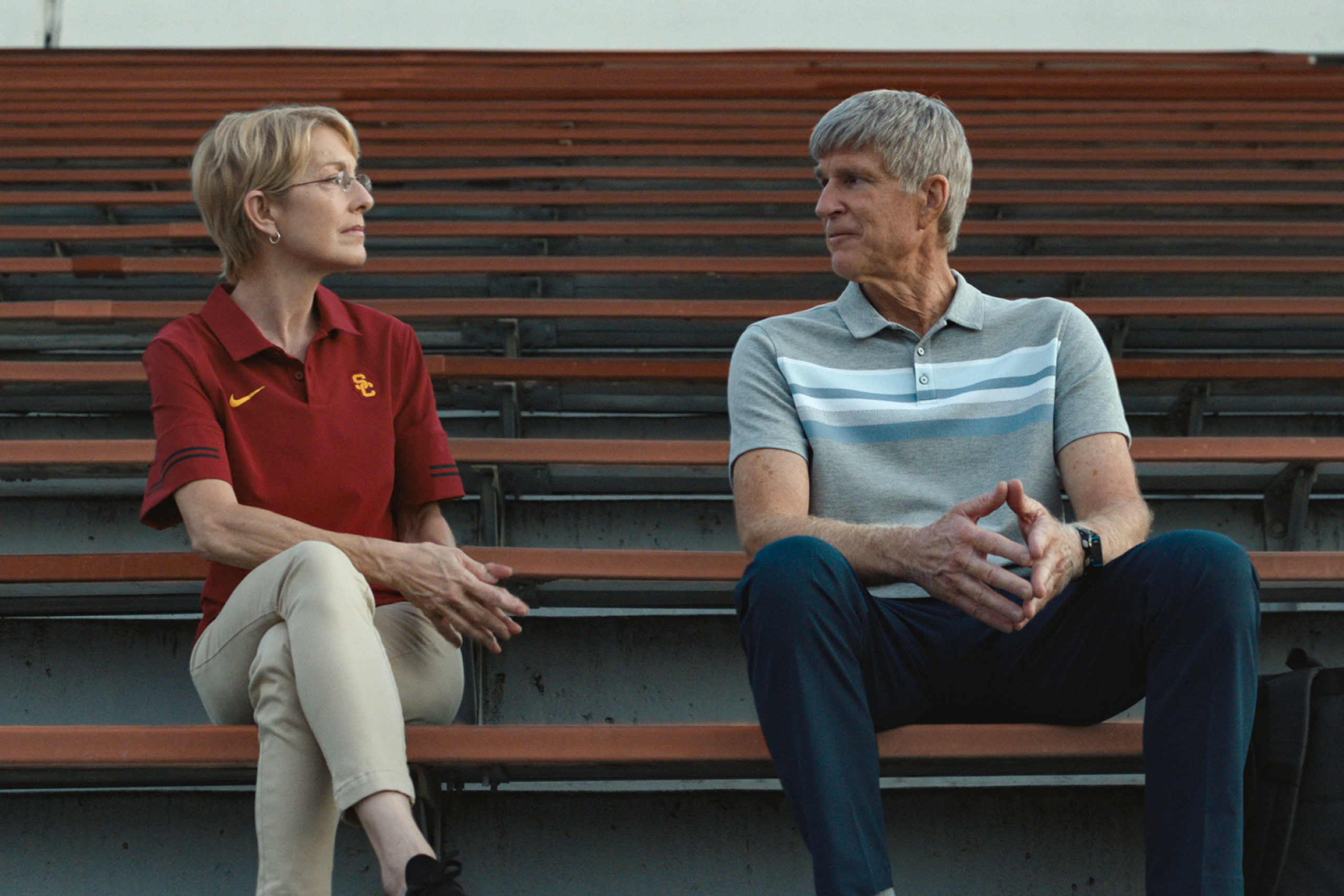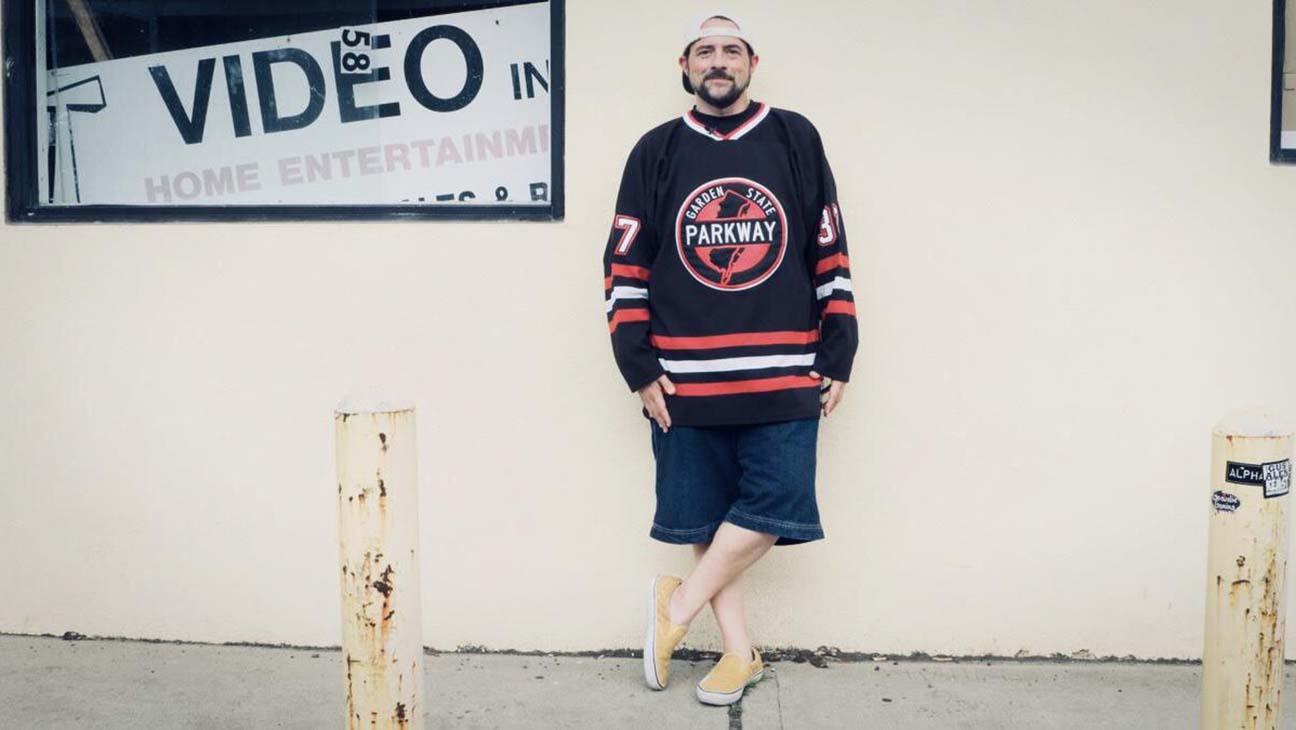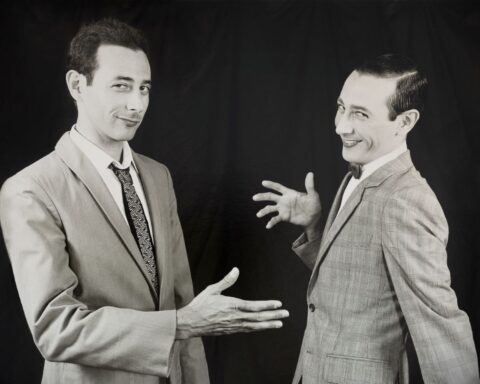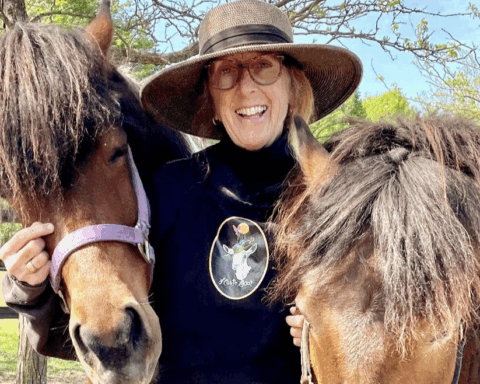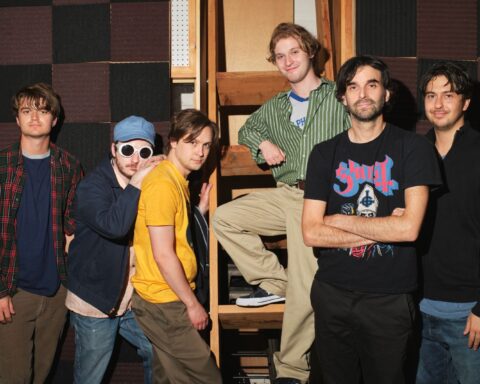For almost a decade, we’ve gone to Thessaloniki to discover new docs, old classics and some features that were missed while on the North American part of the festival circuit. The selection is always fascinating and so is Thessaloniki, an ancient town in the Macedonian area of Greece, very close to where Philip, the father of Alexander the Great, is buried. Normally, one of us would go into rhapsodic accounts of the beauties of the city, but not this year—or, at least, not yet. The festival, which ran online earlier this month, intends to run in theatres in gorgeous Thessaloniki from June 25 to July 4 should the pandemic have subsided. Fingers crossed!
If the festival does come to pass, the program will consist of three parts: Top Docs, Next Gen, and Destination Journey. Next Gen is a series of short films made by young people about the world they’re encountering. We sampled one: An Intermission, made in the UK and sponsored in part through The Guardian’s film division. It’s an impressive entry about homeless teens and, as might be expected, the rapport with the young filmmakers and subjects is superb. There is a restless rebellious tone to the film, which sensitively imparts what it’s like to be out and vulnerable so young in life. The film shoots the homeless encountering each other or playing to the camera while the voice-overs tell stories of what they’re dealing with in their lives.
Destination Journey is an appropriate curated series during a time when travel is so limited. Among the 22 selections are: Peter Mettler’s Gambling, Gods and LSD about inward and outward trips; Chris Marker’s remarkable essay If I Had Four Camels, about photos he’d taken while traveling abroad; Aki Kaurismaki’s deadpan hilarious rock tour parody Leningrad Cowboys Go America; the anthropological classic First Contact about the first white travelers who met Indigenous tribes in Papua, New Guinea; Terence Davies’ melancholic look at Liverpool, Of Time and the City; Jonas Mekas’ experimental diary film Reminisces of a Journey to Lithuania; Robert Kramer’s masterful road trip through America, Route One USA; and Marc Allegret’s ancient Travels in the Congo, trips he made with his lover, the acclaimed writer André Gide, in 1927.
Top Docs is the main stage program at Thessaloniki. Some of the films in this series have been seen and covered by POV including the semi-doc semi-fiction Bloody Nose, Empty Pockets the character-driven sports film Lift Like a Girl Gianfranco Rosi’s exceptional Notturno and the Oscar-nominated The Mole Agent. Two have escaped our attention so far and will be tackled now.
City Hall
(USA, 272 min.)
Dir. Frederick Wiseman
Too many reviews of Frederick Wiseman’s films call them masterpieces while noting the running time (in this case, four hours and 32 minutes) with a semi-shrug/warning and saying something about how the director likes to rigorously examine institutions. While all of that is true enough, one might expect a more respectful accounting of what the great director is accomplishing after his 90th birthday. Wiseman still throws himself into his projects with diligence, integrity and a ferocious attention to detail.
Here his subject is Boston and how the municipal government operates. If there’s a main character—and Wiseman’s films don’t seek them out—it’s Mayor Marty Walsh. As Boston’s Mayor, he is a populist in the older meaning of the word. Walsh is no demagogue; he is a hard working guy, who came up from the ranks of a union and knows what it’s like to get your hands dirty, doing double-shifts at your job. Of course, the mayoralty has cleaned him up some, but you still feel that this is a person who operates from his instincts and works genuinely hard for the people. Wiseman shows us the Mayor working with his staff, accepting and questioning what he’s told. He talks about addressing climate change and Boston’s notorious racism and it’s clear that he doesn’t mind breaking eggs to make a fresh New England omelette.
Most of the film leads up to Mayor Walsh, which isn’t a typical structure for a Wiseman film. We’re taken to endless meetings, where people get up—some sincere, some crazy, some ambitious—and speak about the minutiae of reforms being discussed for districts in the city. The usual “heroes” for Wiseman are people who do their job properly and so this film is very much about the public servants and what they’re attempting to achieve on a daily basis. Boston was suffering from an economic downturn in the year before COVID and another focus for the film is on people trying to get jobs, dealing with an overstrained welfare system and attempting to create development projects for Latina women.
The film concludes in a stirring manner with Mayor Walsh delivering a passionate speech about the future of the city. When made, City Hall worked on many levels including as a riposte to Donald Trump’s America. Will it play as well with Joe Biden? We think so. As Gertrude Stein might have said, “A masterpiece is a masterpiece.”
Belushi
(USA, 108 min.)
Dir. R.J. Cutler
Inspired by Tanner Colby’s book on the late great comedian John Belushi, R.J. Cutler (Billie Eilish: The World’s a Little Blurry) has made a serious film about a man who achieved phenomenal success only to die way too young at 33. Using a lot of Colby’s interview material, the slightly tinny voice-overs by everyone from best friend Dan Aykroyd, through his family, including his wife, Judith, to old comic friends, gives the film a patina of the past. There’s an intriguing build-up in the film, with rare material of Belushi performing and interacting with his friends at Second City, before heading off to New York. Comedy was entering a new age, which is reinforced by clips from the early Saturday Night Live (SNL) programs where Belushi begins to unleash the full power of his crazy personas. The ferocity of his samurai warrior and endless blue collar workers took slapstick way beyond anything that had been done by the Three Stooges. But Belushi wasn’t through innovating. Hired to play a near wordless “Id” character, Belushi took comedy to a different stratosphere in Animal House, the film that made him a superstar. As a capper, Belushi and Aykroyd took their Blues Brothers routines from SNL, turning that into a blockbuster film and recording hit, with such guests as Aretha Franklin, Ray Charles and James Brown.
Cutler’s film shows the downside of Belushi’s success. He had too much drugs, rock’n’roll and sex in his life. Although his friends and loved ones remember him as a kind, likeable figure, there seemed to be something lacking in his soul. Did he burn out? He seems to have done so. Neither Cutler nor Colby could make sense of his meteoric rise and fall. Capturing so many funny moments on screen, Belushi is easy to watch but does leave one with the question: what let him take the risks that made his demise almost inevitable?
Radiograph of a Family
(Norway/Iran/Switzerland, 82 min.)
Dir. Firouzhen Khosrovani
Winner of the best documentary prize at IDFA (International Documentary Filmfestival, Amsterdam), Radiograph of a Family is the kind of film you want to discover at a festival: something fresh in technique and impressive in its narrative and political scope. Director Firouzhen Khosrovani’s story of her parents is absolutely compelling as we find out about a love match that could never resolve itself into how best to spend their lives. As Khosrovani’s film begins, she tells us that her mother married a photograph of her father because she was in Iran and he was living in Geneva. The image of the nice man she married took a young woman raised strictly with sharia laws to a place that seemed hedonistic to her. Though Khosravani’s father was a Muslim and scientist living in Switzerland—hardly known for its bohemian ways—her mother found him and his friends far too casual. They drank wine, had parties and the women dressed in Western style—almost naked to her mother.
When Firouzhen was born, her father was persuaded to return to Iran, then under the rule of the Shah. A cultured man by Western standards, her father played classical piano, loved representational paintings by Impressionists and others, and continued to drink wine with sophisticated Muslim friends while her mother reluctantly accepted his lifestyle. Then, the Islamic Revolution took place and it was her mother who took charge, working with the local councils and finding many women who also eagerly embraced the chador. Her father’s friends disappeared and he gradually retreated to a room, where he could hear Bach with headphones.
Khosrovani’s film is brilliantly assembled. She uses film, family photos, letters and music to create a collage to evoke the contrasting past of Switzerland and Iran. She creates an immediacy to her parent’s relationship by writing dialogue for them, which is dramatized by actors. The affection between them comes through in her mother’s misreading of “monsieur” as “m’sieu” and his words of endearment to her. Visually, Khosrovani shows the gradual alienation of each other’s love through shots into their room, where the bed moves from prominence to eventual removal while the paintings and cultural artifacts disappear.
An X-Ray of a family, the film examines Iran, a country of great culture and sophistication but with a very strict religious philosophy. How do these opposites work together? The answer has never obvious but it does exist in this beautiful film by a daughter who embraces both sides of her parentage and may represent a future for Iran.
War and Peace
(Italy/Switzerland, 128 min.)
Dir. Martina Parenti and Massimo D’Anolfi
An essay film, War and Peace looks at how cinema, photography and today’s cell phones have recorded and affected warfare for the past century and a half. With access to the Swiss archive and other collections, filmmakers Parenti and D’Anolfi illustrate how people perceive the illusions of war—the imagery—and not its reality. Going as far back in cinema to films of the Italian invasion of Libya in 1911 and continuing through images of destruction in Ethiopia shot during Fascist times to the media-rich devastation created in Mogadishu and now in the Middle East, the film show how capitalism and imperialism created the situations that started warfare—and recorded it. As Italians, the filmmakers tend to concentrate on their country’s misadventures in Libya, Ethiopia and Somalia but they include the French foreign legion in their documentary as well.
In a long and revealing section of War and Peace, new recruits in the Foreign Legion are taught about how everything from lighting to shot selections to editing can affect a viewer’s perception of war. In another long and harrowing part, Italian officials attempt to save some of their countryman’s lives during the ISIS wars—and it’s made clear that most of them are working for oil companies. Essentially, the directors want us to think and analyse what we see and feel when we’re confronted with images on every format from film to social media outlets.
If we see clearly, can we stop war and embrace peace? This doc certainly hopes so.
This ends Marc’s report; here is Judy’s.
Documentary films are vital to our memory of the past and understanding of history. Well-made documentaries with direct access to key actors in critical events can revive those memories. They can sometimes force us to re-evaluate what we thought we knew. Two documentaries at this year’s festival feature the recollections of central characters in events of the 1960s: one a well-known singer, songwriter and performer arrested and later exiled by the military dictatorship in Brazil, the other a Lithuanian sailor on a Russian fishing ship whose decision to seek freedom from the oppression of the Soviet Union set off a propaganda battle at the height of the Cold War.
Narcissus Off Duty
(Brazil, 83 min.)
Dir. Renato Terra, Riccardo Calil
Caetano Veloso and his friend Gilberto Gil were among the biggest stars in Brazil in the mid-60s. They were part of a radical cultural movement called Tropicalismo, which sought to integrate foreign influences with Brazilian sounds and realities. A collective album of music was released in 1968 and is considered a classic. Theatre was also a popular form. The movement was cut short when its leaders were arrested for their activities, which were deemed unacceptable by the dictatorship that had been in power since 1964. Gil and Veloso were eventually exiled; Veloso spent two years in London before returning to Brazil to continue his career. The Bolsonaro government is proclaiming that the military dictatorship was a positive thing, so hearing about those times from one of the survivors feels significant.
Directors Terra and Calil place Veloso in front of the camera. He is alone on a chair; behind him is a high blank wall. He wears a blue shirt, open at the collar. He is not young but he is charismatic. He tells the legendary story: at home with friends, singing songs, drinking, up all night. With an astonishing recall for people, actions, sensations, Veloso tells us about the experience of being detained, being kept waiting, being threatened, being incarcerated in solitary confinement, with an old Communist between him and Gil. Of being watched, of being looked over, of hearing the suffering of others. The interviews with men with the power of life and death over him. Their release, after a week of solitary confinement and 54 days altogether. At times, he sings songs that were important to him then and that remain significant, including one that he composed in prison after being shown for the first time a picture of the earth from space. The original idea for the film had been to use archival footage and other interviews, but the two interviews with Veloso were found to be sufficient, and sufficiently compelling, to make this documentary. Veloso is certainly watchable, but for audiences who are not familiar with him or Brazilian history it may be obscure.
The Jump
(Lithuania/Latvia/France, 84 min.)
Dir. Giedre Zickyte
o those who were not around at the height of the Cold War, it may seem unfathomable that one man seeking asylum by jumping from one boat to another as they are moored close together off Martha’s Vineyard could cause an international diplomatic incident. North American audiences were transfixed by the story of a young sailor jumping onto a Coast Guard ship and were horrified–as were politicians up to President Nixon–that an Admiral had decided to let the Russian officials also on board take him back.
The story of Simas Kiderka is masterfully told in this documentary that has had a shamefully limited run of festivals thus far. Director Giedre Žickyte, whose previous work includes the award-winning How We Played the Revolution and Master and Tatyana, introduces us immediately to an elderly man making his way to the water for a swim, a nice strategy which shows that our protagonist has survived his ordeal. From there, we learn about the moment when as a young man, working on a Soviet fishing ship, Kiderka saw that Americans are not the ogres he thought while the Russians truly were, so he took a chance on what appeared to be a better life. The story is told partially through clips from American TV and interviews with the men who were on the Coast Guard vessel that day but the most amazing footage was shot recently when Kiderka was brought to the ship and recreated what happened. Asked what was likely to happen to the poor sailor at the time, one politician said “it’s unfortunate, but he will probably be killed by the Russians.” All of this caused outrage in the US, which prided itself (at that time) on its support for political refugees.
The story of the next few years in the mid-70s is astonishing. Lithuanian Americans did not give up on their compatriot. One group made contact with his mother. Another group put pressure on a political candidate, promising to use their numbers to get him elected if he championed their cause. Miraculously, the first group proved that Kiderka was entitled to US citizenship through his mother, who was born there, and the second group’s politician got the ear of the new President, Gerald Ford, who actually raised the issue in his very first call with Brezhnev. And so Kiderka, who was tried and convicted of treason and imprisoned in the gulag, was freed and his family brought to the US. But that is not the end of the story.
In the US, the story of Simas Kiderka had so transfixed the public that Alan Arkin starred in a TV movie about it. School children were moved to write to the freed prisoner. Politicians were eager to meet Kiderka, who traveled all over the US trying to tell people about the reality of the gulag and the Soviet system. The latter part of Žickyte’s documentary brings Kiderka back to the US (from Lithuania, where he and his wife returned in 2007) to meet with some of the people who had supported him, written to him, and appreciated his work as a property manager (which was his employment for years in the U.S.).
It’s a complicated story with multiple perspectives. There is a high price to pay as a simple person to become an international symbol. Giedre Žickyte has made excellent use of dramatic recreations, archival documents and footage, return visits to sites in the gulag and the United States, and interviews with key players including Henry Kissinger. The Jump is an impressive documentary that deserves wide distribution.
Thessaloniki programmed two films about same-sex couples trying to form families. In Hungary, a politically engaged, apparently comfortable lesbian couple retreats to a rural home to avoid the threat of violence from homophobes. In Israel, a wealthy gay couple lives a pleasant life in the heart of Tel Aviv. In each case, though, their dreams of being parents are threatened by governments intent on preventing them from adopting, or even of finding a willing person to help them out biologically (either through donated sperm or surrogacy).
Her Mothers
(Hungary, 75 min.)
Dir. Asia Dér, Sári Haragonics
Virag, a leftist politician, and Nora, a musician are lesbians in an increasingly oppressive Hungary. Through intimate footage of their home life and time spent with friends and family, directors Dér and Haragonics show how their relationship develops. We see them make difficult decisions about work, about whether and how to register for adoption, and whether and how to seek a sperm donor. Everything is a risk. Eventually, they decide that each of them will register to adopt as a single woman since the laws of Hungary prevent them from adopting as a couple or of adopting each other’s child. It’s pointed out that just recently, the government introduced legislation to ban all adoption by gay couples and single people and unmarried straight couples. Even friends ask how they will explain the situation of a Roma child with two mothers at the kindergarten. Finally, though, their dream is realized and one of them is approved to adopt an older child (probably about 18 months or two years old).
The second half of the film follows the couple as they navigate raising a child, who has been neglected, while Virag gets a job with Greenpeace and Nora’s work as a musician takes her away from home in the evenings. As the child adapts and starts to thrive, she starts to prefer one parent over the other, which the ‘rejected’ parent feels is part of the lesbian experience. More significantly, the increasingly dangerous political situation forces them to make a decision about jobs, waiting for the other mother to be approved for adoption, and leaving Hungary altogether. The directors make clever use of TV news to provide updates on right wing Prime Minister Victor Orban’s inflammatory language, as he equates homosexuality with pedophilia, for example. The verité approach taken by the directors brings us very close to Virag and Nora, and engaged in their situation.
Double Income, Kids
(Germany/Israel, 94 min.)
Dir. Hendrik Schäfer
A very nice couple have kids via surrogate. What’s not to like? Tel Aviv could not be more different from Budapest: the climate, the Pride parade, the wealth. Motty and Alon have been together for four years. They have a difference of opinion about how to have children, but they finally agree that hiring an American surrogate is the way to go. (It will only cost a quarter of a million dollars). German director Hendrik Schäfer’s film opens with an American doctor explaining how in-vitro fertilization works, and the whole film has a similar clear, optimistic tone. Yes, there are challenges: in theory, surrogacy is illegal in Israel. It is very expensive. There are mild disagreements with the families. It will be hard to get passports and get the children (twins, as it turns out) back into the country. We don’t see any of that. We meet lovely people who love our characters. This film tells us, love conquers all. Or, more accurately, “If you have money, you can travel.” We’re left wondering if Schäfer truly saw no flaws in Motty and Alon’s story or if he decided to provide a happy account of same-sex surrogate parenthood.
The online portion of the Thessaloniki Documentary Festival ran March 4-14, 2021.





